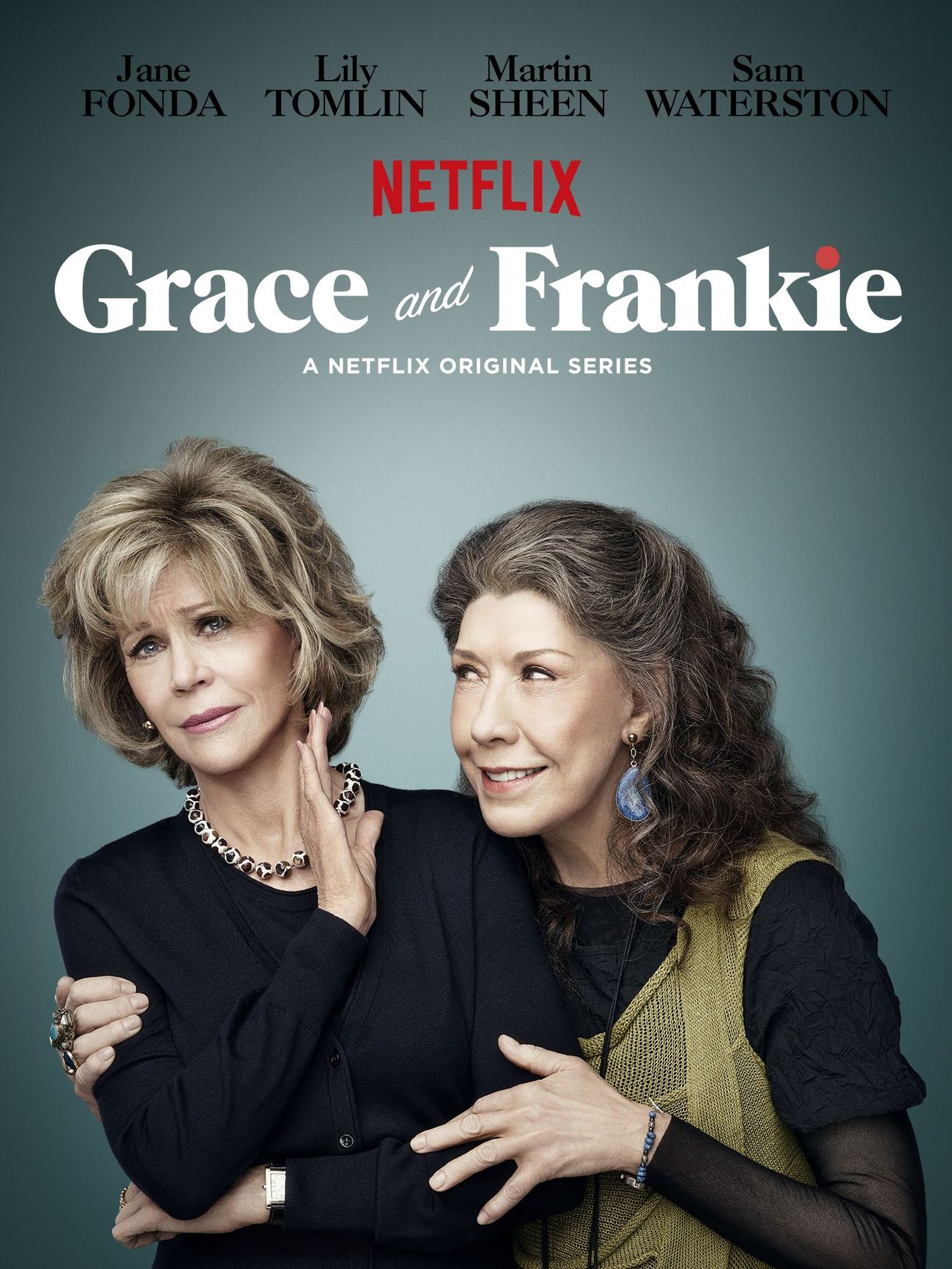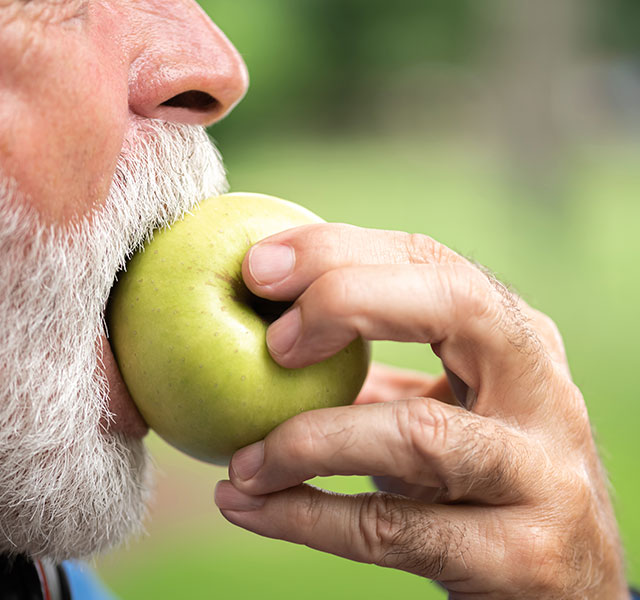(Season 1, 2015), 13 episodes, available on Netflix streaming
What’s nice about Grace and Frankie—aside from seeing Lily Tomlin and Jane Fonda stretching their comedic wings—is how it looks at the golden years with reality and humor. That theme runs throughout the first 13 episodes of the series. Even when the show veers toward the farcical, we root for the title characters—two not-quite friends whose lengthy marriages come to an abrupt end—far more than we recoil at their actions.
Grace (Fonda) and Frankie (Tomlin) have known each other for years, but they’ve never been close. Grace, a retired executive, is direct, dresses like a politician’s wife and is as rigid and immovable as her coif. Frankie is an artist and free spirit, the kind of woman who happily teaches art to convicts and makes her own vaginal lube. (It’s edible, of course.) Naturally, they hate each other.
The women only spend time together because their husbands, Robert (Martin Sheen) and Sol (Sam Waterston), are longtime law partners. Also, for the past 20 years they’ve been lovers, a secret they’ve successfully hidden from their wives. Now, the men are ready to come out—and to get married. Over dinner at a fancy restaurant, they come clean to their wives. “I’m leaving you, and he’s leaving you,” Robert says.
It goes well, save for Grace tossing her entrée at Robert and Frankie hyperventilating.
The parties get their affairs in order. Robert and Sol move in together and start announcing their love, a freedom that is both exhilarating and completely foreign to them. Grace gets the Gatsbyesque beach house that Robert and Sol bought. Frankie tries to resume life in her old house, but the memories make it impossible to breathe. So she moves in with an appalled Grace, who may be rigid and intimidating but isn’t heartless. There’s your show.
Grace and Frankie does take a little time to find its groove. Show runners Marta Kauffman—late of Friends and Dream On—and Howard J. Morris steady their attention on Grace and Frankie’s adult children, wisely giving more air time to the wonderful June Diane Raphael, who shines among the stars as Grace’s funny-blunt businesswoman daughter. The expository stumbling and opposites-attract obviousness subside. By episode five, Grace and Frankie sparkles. The writing gets tart and tight, but more importantly, the show starts to portray the golden years as a second puberty, one that’s filled with its own highs and lows and complications. It’s The Wonder Years for the older and wiser crowd.
Some of the show’s machinations are a bit too obvious: Grace tries online dating with very mixed results. One suitor (Brian Benben) turns from fawning to psychotic, seemingly before the lunch specials are read. Frankie struggles with her new laptop—though she bonds over the phone with a super-nice tech guy—and finds joy in hate-tweeting the national spelling bee. But Grace and Frankie excels when it gets thoughtful, such as when Grace (dating an explorer, played by a shaggy-haired Craig T. Nelson) learns to stop playing along and express what she wants. Or when Frankie realizes her dependence on Sol as a buddy and a confidante is sabotaging her own attempts at happiness. Robert and Sol don’t just jump into couplehood. After living as imposters for so long, they have to learn how to be themselves.
The same goes for Grace and Frankie, both 70 years old, who finally get to go their own way. We buy their contrived living situation and their adventures in single San Diego. After all, it’s easier to leap when you’re holding someone’s hand, especially when Fonda and Tomlin continually breathe life and energy into this odd couple.



